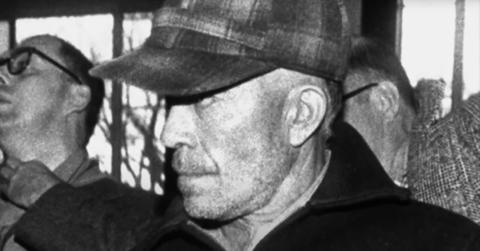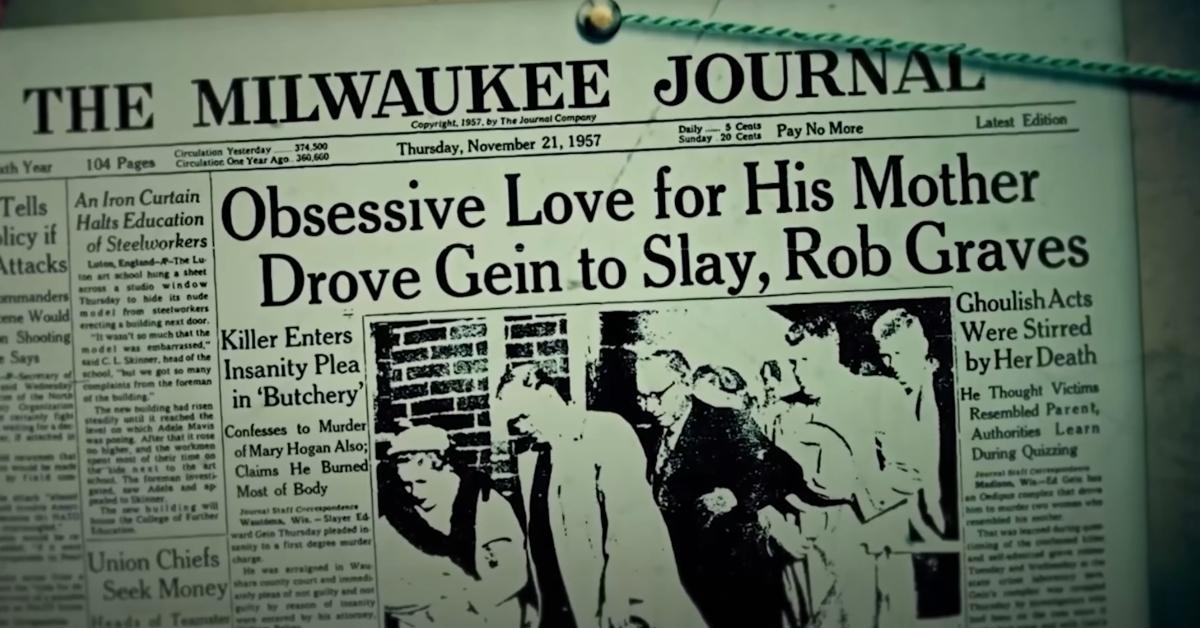Ed Gein Spent Nearly 30 Years in Various Mental Hospitals — What Was He Diagnosed With?
"I don't see how there could be any other conclusion but that the man is insane."
Published Oct. 3 2025, 4:25 p.m. ET

When serial killer Ed Gein was asked about the murder and mutilation of 58-year-old Barbara Worden, his response was rather shocking. "I was sort of in a daze-like," he said, unable to remember the exact details of the crime that led to her body hanging in his kitchen. He later confessed to the murder of Mary Hogan, 54, a tavern owner who vanished three years prior in 1954. Police would find her face in a bag, fashioned into a mask.
Other than what was found in Jeffrey Dahmer's apartment, few crime scenes have ever been as gruesome as Gein's. Authorities removed furniture made from human skin, bowls made out of skulls, and a belt made entirely of women's nipples, to name a few. "I've been killing for seven years," Gein told District Attorney Earl Kileen. He eventually received a diagnosis that shed some light on the killer's motives. Here's what we know.
Ed Gein's lawyer requested he see a psychiatrist, knowing a diagnosis was imminent.
According to The Daily Telegram, five days after Gein was arrested, his lawyer requested an "immediate mental test" for his client. "I don't see how there could be any other conclusion but that the man is insane," said William Belter to Circuit Judge Herbert Bunde. D.A. Kileen told Belter he was more than willing to go along with this. Belter added, "I don't doubt what the results of the examination will be."
What was found in Gein's house in Plainfield, Wis., gave the prosecution and defense enough of a reason to send the killer to a psychiatrist. Gein also confessed to a few things that went beyond the two murders. He told investigators about a desire he had to be a woman, which prompted him to kill two women and dig up the bodies of several others. The grave robbing was done in order to "get parts" that Gein could "wear upon his own body."
In early January 1958, Gein was deemed unfit to stand trial, reported United Press International. Judge Bunde said this was the toughest decision he's ever had to make. Two psychiatrists testified that Gein said he was "ordained by God" to kill and that he robbed graves to "substitute human parts for the companionship of human beings." Of the three psychiatrists who spoke about Gein's mental health, only one said he was medically insane but knew the difference between right and wrong.
Gein was diagnosed with schizophrenia.
Gein was sent to Central State Hospital, where he was diagnosed with paranoid schizophrenia. Dr. Edward F. Schubert, the superintendent of the hospital in January 1968, said over the years, Gein's paranoia had subsided. "Gein is aware of his surroundings," he told the Neenah Menasha Daily Northwestern. Apparently the killer was able to coherently discuss the crimes he was accused of, which meant he was legally sane enough to stand trial.
In November 1968, Gein was found guilty of murder and was sent back to Central State Hospital by Circuit Judge Robert Gollmar, per the Manitowoc Herald-Times. In July 1984, UPI reported that Gein died of a "respiratory ailment at the Mendota Mental Health Institute at age 77."
